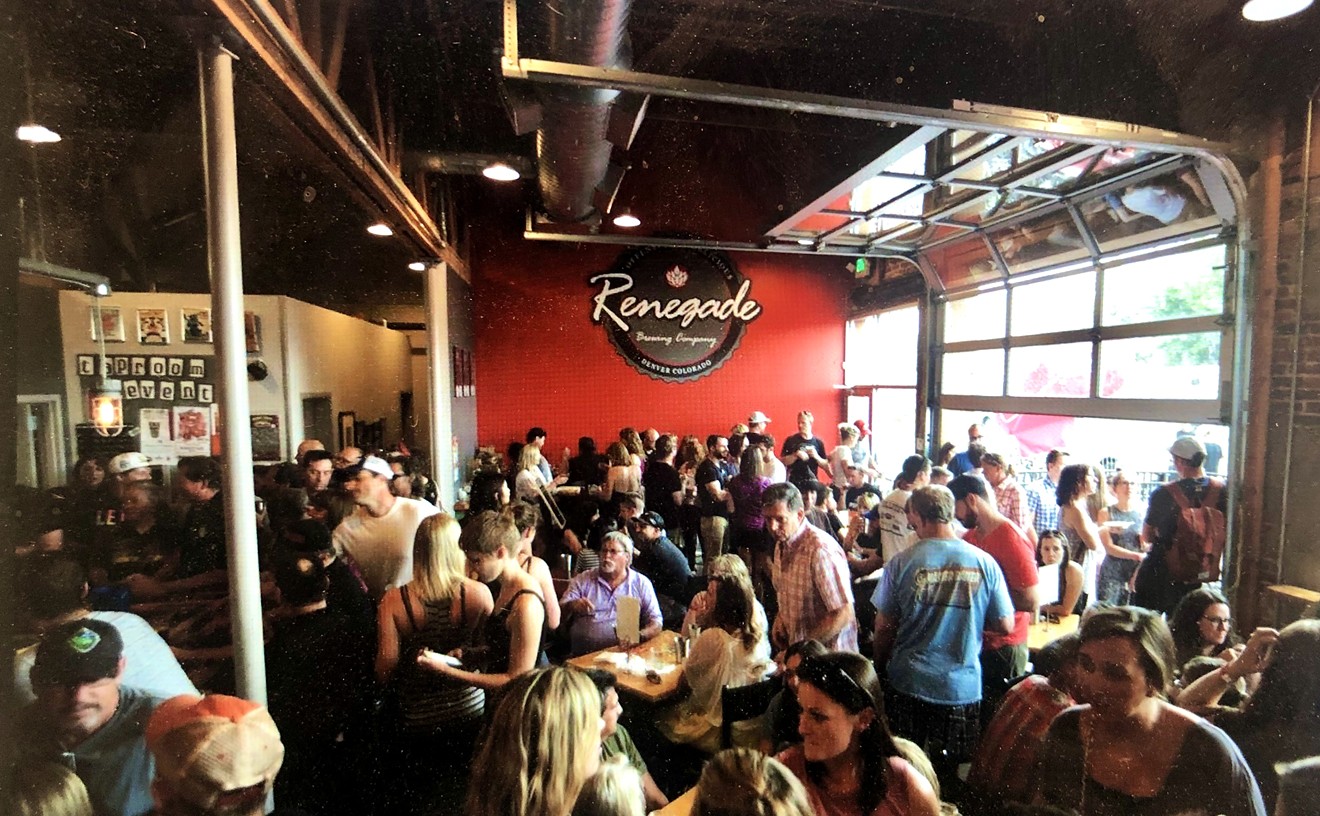"Poetry," wrote Robert Frost, "is what gets lost in translation." Cooking may not be poetry, but in the right hands — whether those of a culinary-school grad or a mother re-creating authentic family recipes — it can qualify as art. At La Guarida Cubana, a tiny Cuban restaurant that opened in June on a stretch of East Colfax known more for McDonald's and pot shops than good food, art is definitely happening — but something is also at risk of getting lost.
Run by Lissette and Enrique Rosell, La Guarida Cubana is a no-frills mom-and-pop joint, with five tables under red-and-white-checked cloths, potted tropical plants and posters of Cuba on the walls. Lissette does the cooking, and Enrique helps out as needed. Their daughter Sussette helps out, too, waiting tables, patiently answering questions about the menu, and sometimes tending to her crying little sister in the back. Though the couple ran a restaurant in Cuba for some twenty years, the food isn't the fancy kind found at Denver's higher-end (and higher-priced) Cuban restaurants. This is the stuff of home kitchens, and family recipes are prepared, as Lissette stresses through her daughter's translation, "with love."
See also: Photos: A Family Affair at La Guarida Cubana
With the restaurant's rather late opening time of ten o'clock, it's hard to start your day with breakfast the way Cubans do. (Your boss might have something to say about that.) But maybe when you're out of the office for a meeting, or on some Saturday, you could stop by for the morning ritual of coffee and toast. Oversized triangles of pressed Cuban bread are slathered with so much butter that the warm, puffy insides bring to mind egg-soaked French toast, without all the eggs — or the sweetness. Wash it down with "coffee and milk" (café con leche), a smooth jolt of slightly sweet caffeine that could put any coffee chain out of business. The drink, made by pulling espresso into a cup with sugar, is so much a part of daily life in Cuba that even toddlers grow up on it.
Around noon, tables fill and the phone starts to ring with takeout orders. Old men saunter in, chuckling as they trade pleasantries in Spanish with the Rosell children. Young guys, T-shirts taut against muscular chests, dig into large portions of rice with chicken, a steal at just $5.50, and the classic shredded-beef dish known as ropa vieja, though the latter's bland tomato sauce and waterlogged corn, peas, carrots and green beans lessen its appeal.
Other hearty entrees include three combo plates offering roast chicken, roast pork or chicken wings, plus assorted sides and, depending on the combo, dessert. The No. 2 features traditional "lechon asado," large pieces of tender pork bursting with flavor from a day-long rub with sour orange juice, salt and garlic. As luck would have it, the No. 2 also comes with the best sides: moro rice — black beans and rice cooked together using the bean liquid, not water, to plump and flavor the grain; and maduros, soft slices of sweet plantains that are fried until dark brown on the edges, sugars transformed into a caramelesque chewiness. These sides, as well as white rice, frijoles and the addictive mariquitas (salty coins of fried green plantains with fresh lime wedges), are also sold à la carte.
Unfortunately, tres leches cake, a popular Cuban dessert, is not available, though the guava-filled puff pastry will do in a pinch.
The same menu is offered all day, making portions somewhat large for lunch but just right for dinner. Sandwiches, a lunchtime favorite, include turkey, tuna or ham-and-cheese options, but none compare with the Cuban and its close cousin, the Midnight. Filled with sliced pork, ham, Swiss cheese, pickles and mustard, these traditional sandwiches are pressed into irresistible toastiness. Order the Cuban for bread that's crunchier, the Midnight for a shell that's slightly softer and faintly sweet. In both, the use of pickle spears rather than slices might raise an eyebrow, but chalk that up to house rules. And while the ratio of bread to meat is high, the attraction is as much the bread (not baked in-house, but still delicious) as the filling.
The bread is even more important in the asere, described in a somewhat misleading parenthetical as "spicy." Named for the slang word for pal or dude (as in, "¿Qué bolá, asere?," or "What's up, dude?"), this non-traditional dish combines chopped-up pork, turkey, chicken, salami and ham, not to mention lettuce, cheese and pickles, held together by a slightly spicy mayo-based dressing. It tastes like something Mom might serve on leftover night — and can be off-putting in the way that leftover night tends to be. Unless, that is, you know the real translation for asere; then you might feel more friendly toward the casual combo, since the sandwich surely doesn't seem fit for company. Neither do the ham croquettes, a '50s-style appetizer made of a gummy ham mixture, deep-fried and served with a saltine for garnish. In Cuba, croquettes are like cupcakes, quintessential party food served at kids' birthday parties and full of happy connotations of home and childhood. When food takes on that kind of emotional pull, taste becomes more subjective than objective; still, it's hard to see these croquettes as anything more than throwbacks to an era of canned soup and onion-topped casseroles.
Which leads to an important, if somewhat obvious, point: Just because Mom — your mom, my mom, Sussette's mom — makes something from an authentic recipe, that doesn't mean it's good. La Guarida's habanero soup, mixed vegetables in either beef or chicken stock, needs degreasing and a finer sieve to remove small bones. Chicken empanadas need something, anything, in the filling besides chunks of bland white meat. Rice needs to be fully cooked, and so does cassava when it appears as a side. On one visit, my Cuban toast with butter arrived as garlic toast, not quite the breakfast I had in mind. With mistakes such as these, it's clear that La Guarida Cubana needs to pay more attention to the craft of cooking before a meal here is a masterpiece.
And yet when you walk through the doors, you still sense that art is happening. It's the art of a family serving authentic Cuban fare that's made, as Lissette says, with love, a love that's never lost in translation. And sometimes — not always, not on date nights or big birthdays or when you're meeting friends for dinner — that's enough.










